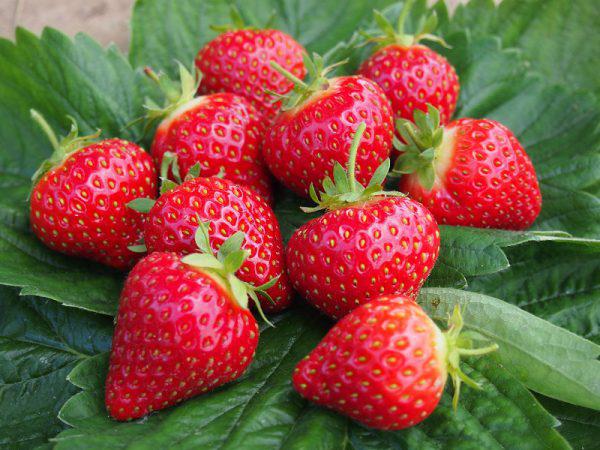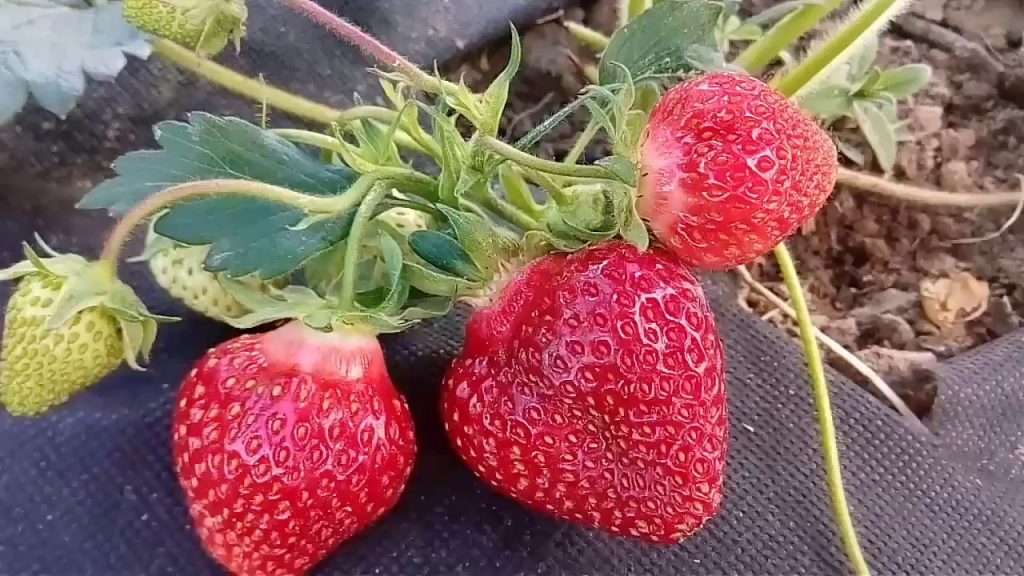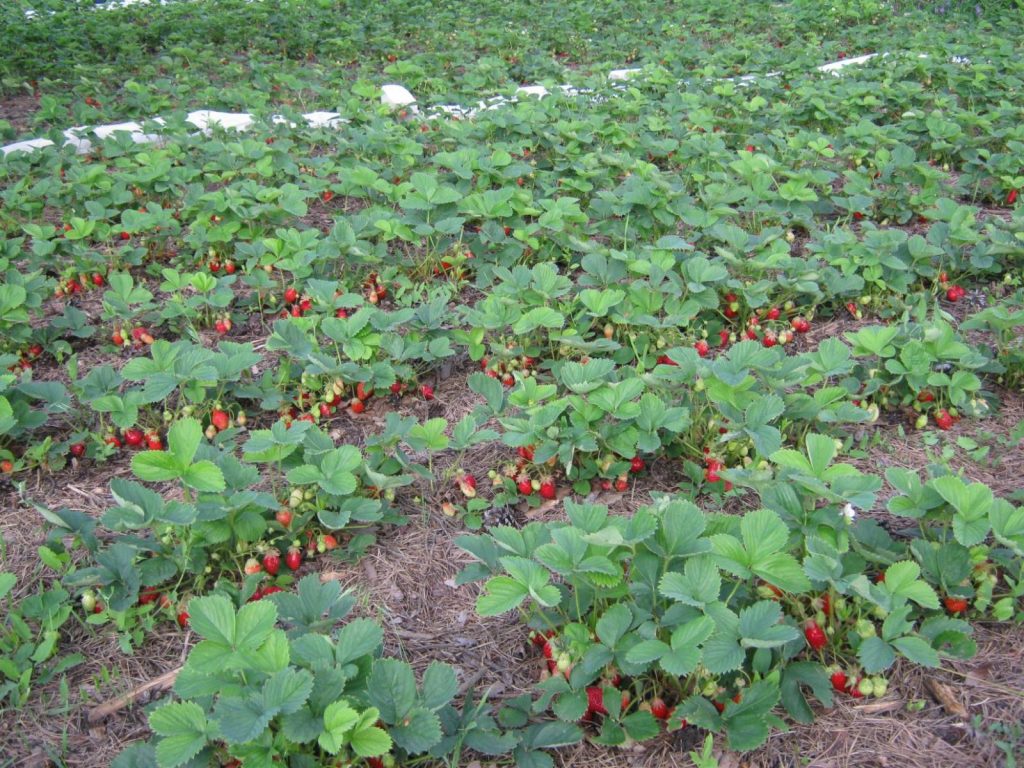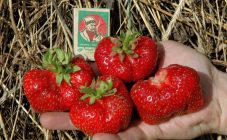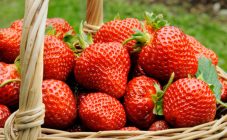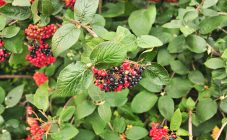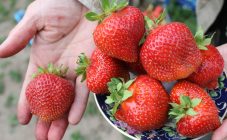Content:
Strawberries are an amazing berry loved by both adults and children. It attracts attention with its appetizing appearance, pleasant aroma, excellent taste and, of course, benefits. It is grown in almost all home gardens and dachas. Breeders annually bring out all new varieties with individual taste characteristics and approach to cultivation. One of them is the Khonya garden strawberry.
Honey strawberry: variety description and characteristics
Strawberry variety Honey belongs to the old species, has high yields. It was bred in the USA in 1979 by crossing the Vibrant and Holiday strawberry varieties. Honey (the variety is sometimes mistakenly called the Honeio strawberry) has absorbed the best parental qualities, thanks to which it is so widespread and in demand to this day.
This type of remontant strawberry belongs to the early ripening, the time to harvest is suitable in mid or late May (depending on weather conditions and compliance with agricultural practices). The flowering period is usually two weeks, starting in late April.
Large-fruited strawberries belong to short daylight varieties, so budding takes place in late summer or autumn, when daylight hours are no more than 12 hours. Harvesting is supposed to be done at intervals of 2-3 days. The variety is fruitful, the summer resident harvests, as a rule, within three weeks.
Honey strawberry: variety description
- The strawberry bush has a powerful root system, grows quite spreading and erect. A large number of mustaches are formed. Peduncles are strong enough to hold large berries.
- The petioles are characterized by a slight edge, the leaves are painted in dark green tones.
- The berries have a conical shape; as they ripen, they turn into a deep red hue with a characteristic shine. Sizes vary from medium to large, the weight of each fruit, subject to the rules of agricultural technology, can reach 30 g.
- The pulp has a pinkish or pale red hue, exudes a rich pleasant aroma. As they ripen, the size of the fruits gradually decreases, but the taste and aroma only improve. Honey flavor prevails.
- Strawberries have an attractive appearance, shelf life is no more than three weeks. Can be transported over long distances. Thanks to these features, gardeners are actively cultivating Honey for commercial purposes.
- The frost resistance indicators are excellent, the variety has good resistance to diseases and pests. Even a novice agronomist can grow a culture.
- Seedlings quickly adapt to the place of growth, unpretentious and persistent.
Agricultural rules
For planting in open soil, it is necessary that each seedling has at least 5 healthy leaves. The spacing between the bushes is of great importance, the optimal distance is 25-30 cm. Plants of this variety do not react well to excessive moisture in the soil, so it is not recommended to plant strawberries in lowlands.With the onset of autumn, it is recommended to make furrows along a row to drain excess moisture.
Optimal landing site:
- The landing site should be level or have a slight slope to the south.
- The soil should be loose, slightly acidic and enriched with mineral, organic fertilizers.
- The planting holes should be of such a size that the root system of the seedling can be safely located there.
- You cannot plant a plant if its predecessors on the site were tomatoes, potatoes. It is recommended to grow strawberries after garlic, sorrel and mustard.
- Planting is recommended on a cloudy day or in the rain.
It is recommended to start preparing the site one month before the expected landing date. Fertilizers should be applied to the soil: potassium sulfate, superphosphate or organic matter.
The depth of each hole is at least 30 cm. A small amount of soil mixed with fertilizers is introduced into the hole, then the seedling is carefully lowered and the root system is straightened. As the pit falls asleep, it is necessary to compact the soil so that cavities do not form between the roots. It is important that the apical bud is level with the ground after planting.
It is recommended to purchase planting material in special nurseries. This will eliminate the likelihood of damage to seedlings by ticks or diseases. Before buying, you need to make sure that the bushes have not sprouted. A leaf located in the center will help to understand this. It should be miniature, deep green in color. After purchasing, the seedlings should be in a shallow container, and then in an apartment or greenhouse.
Honey strawberry care
Basic care consists of regularly weeding, maintaining a loose soil structure, and fertilizing and pest control as described below:
- For watering efficiency, it is recommended to try the drip method, which saves not only the summer resident's time, but also finances.
- Not only poor, but also abundant watering has a detrimental effect on strawberries. As the fruits form and ripen, the number of watering must be reduced, otherwise the berries will rot.
- Wood ash, fermented mullein or chicken droppings are used as mineral and organic complexes.
- During the active fruiting phase, it is recommended to add urea to the soil, which is previously recommended to be diluted with ammonium sulfate, water and liquid mullein.
If there is no mulching layer on the strawberry rows, care must be taken to ensure that there are no weeds in the aisles. It is imperative to regularly loosen the topsoil properly.
Advantages and disadvantages
The Honey strawberry variety has many advantages that more than overcome the existing disadvantages. The main ones are:
- Fast and collective ripening in comparison even with other early maturing varieties.
- Unpretentious care and soil composition.
- Abundance of fruiting.
- The ability to transport fruits even over long distances.
- Cold resistance.
- The culture is practically not susceptible to disease.
There are also disadvantages. The main problem that agronomists face is watering, for this variety it is important to regulate the process, since the plant does not tolerate drought and waterlogging of the soil.
The root system can be susceptible to fungal diseases.
The Khoney strawberry variety is just a godsend for novice agronomists and summer residents who grow crops for sale. She is unpretentious in care, which is a significant advantage. In conclusion, I would like to add that the plant is grown not only in open soil, but also in hanging pots, which are filled with fertile soil with excellent moisture and air permeability. In general, an excellent variety that suits both experienced agronomists and advanced farmers with many years of experience.
